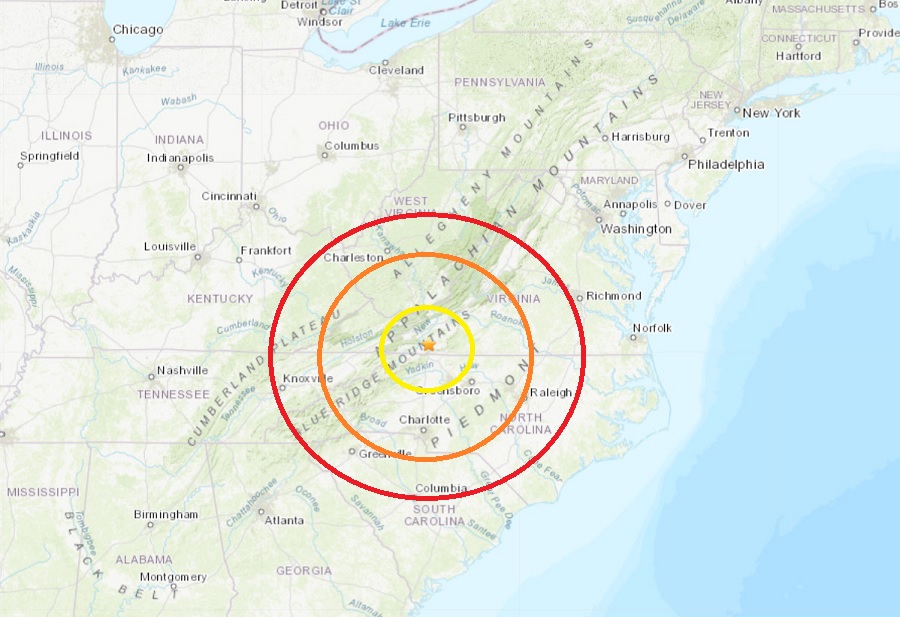
For the second time this week, a new earthquake rattled Virginia during the morning hours today. According to USGS, a relatively weak magnitude 2.6 quake struck from a depth of 3.9 km at 9:09 am this morning. It struck in Hillsville, Virginia, just 1 mile north of where a similar earthquake struck on July 6. Dozens of people used the “Did you feel it?” web reporting tool on the USGS website to report shaking, but there have been no reports of damage or injury.
Thursday’s earthquake was the strongest to strike the state in recent months. According to USGS, at 5:50 am on July 6, a 2.7 earthquake struck from a shallow depth of 0.4 km . That earthquake was the strongest to strike the state in recent months.
There have been other earthquakes in Virginia in recent weeks and months but none were as strong as today’s. On June 20, a magnitude 2.3 event struck near New Castle. Last October, there was also an earthquake weaker than today’s that forced schools to close in one county. Two weeks before, another earthquake struck north and west of Richmond.
Virginia doesn’t have much seismic activity but earthquakes can occur here from time to time. According to the Virginia Tech Seismological Observatory, Virginia has had over 160 earthquakes since 1977 of which 16% were felt. This equates to an average of one earthquake occurring every month with two felt each year.
Virginia can get damaging earthquakes too. The strongest in modern times was the magnitude 5.8 earthquake that struck near Mineral, Virginia, on August 23, 2011. That seismic event was widely felt–from Maine to Georgia, west to Cincinnati, Cleveland, and Chicago, and southeastern Canada–over a broad area inhabited by one-third of the U.S. population. When the earth stopped shaking, more than 148,000 people reported their experience of the earthquake on the USGS website. The total economic losses from the earthquake were about $200−300 million, which included millions of dollars in damage to the National Cathedral, the Armed Forces Retirement Home, and the Washington Monument in Washington D.C., as well as minor to major damage to almost 600 residential properties. It was the largest and most damaging earthquake in the eastern United States since the 1886 Charleston, South Carolina earthquake. Damage in the epicentral area represents Modified Mercalli intensity VIII, with many instances of broken and collapsed masonry walls and chimneys, as well as shifting of structures on their foundations. Significant damage occurred to structures at distances in excess of 80 miles to the northeast in the Washington DC area. The rupture process was a complex reverse fault event, initiating at a depth of 8 km.